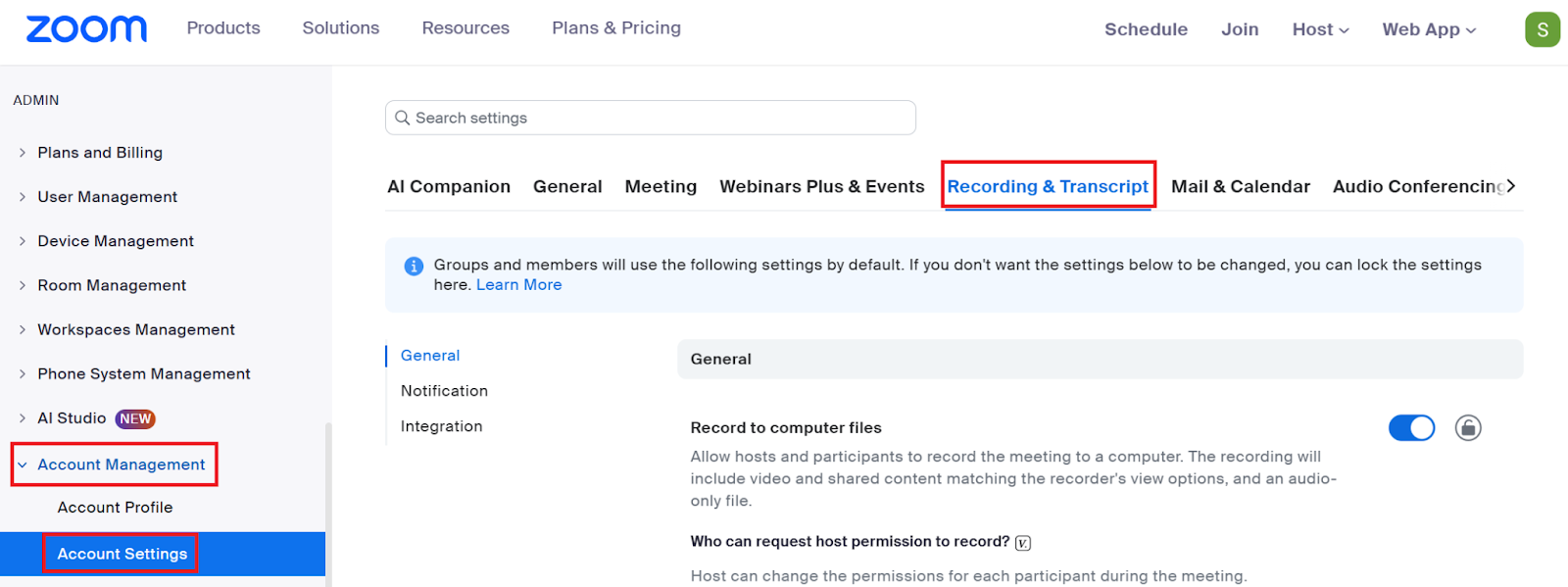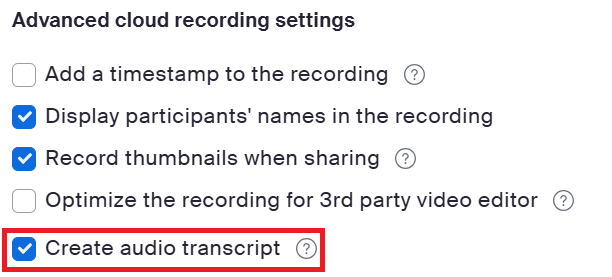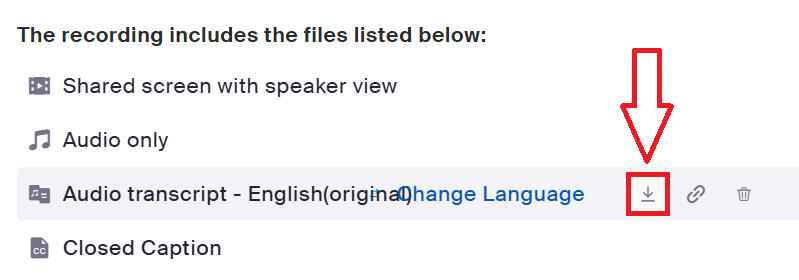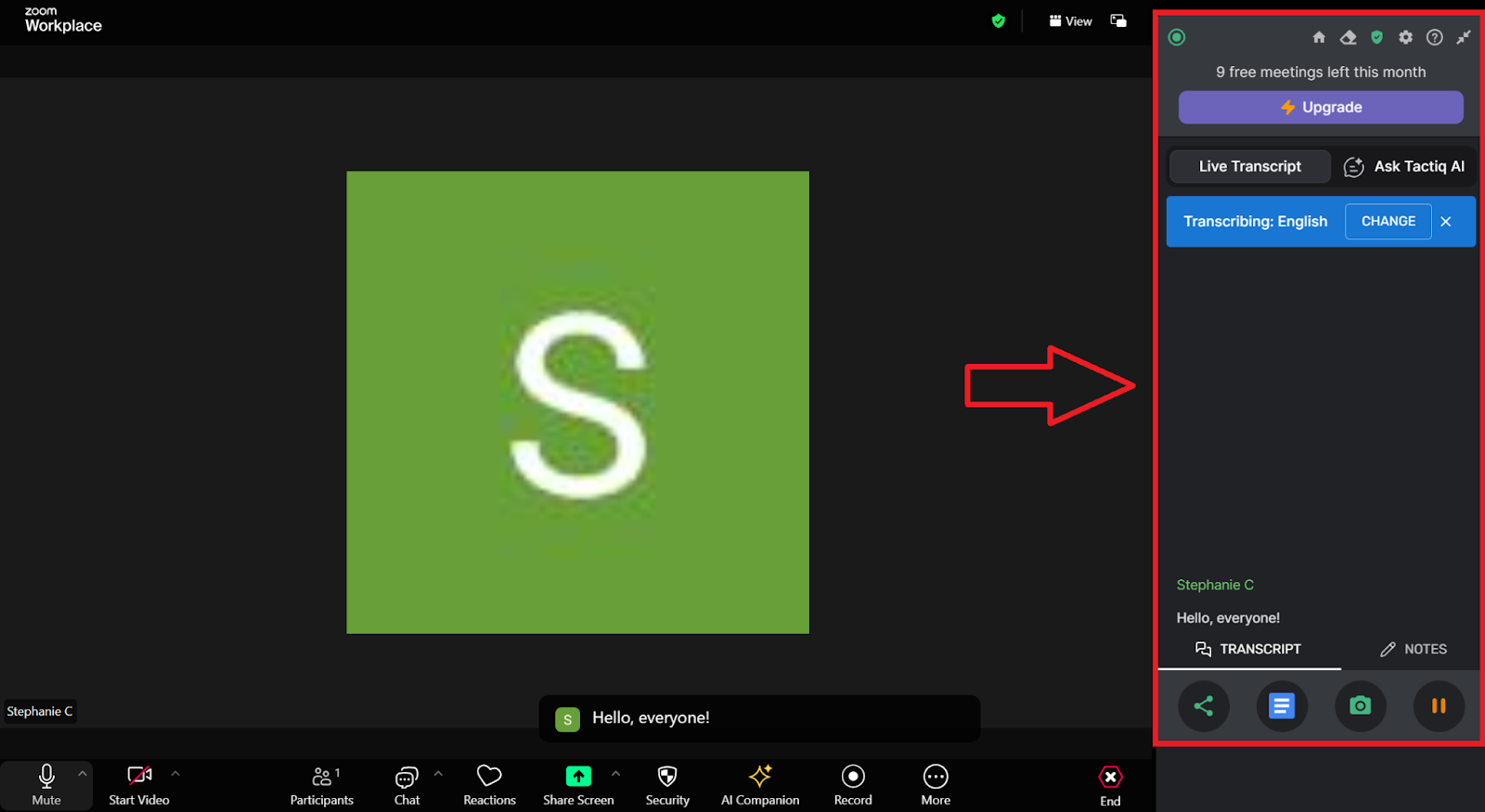How to Find Zoom Transcripts
January 5, 2024
January 5, 2024
November 13, 2025
November 13, 2025
Have you ever found yourself scrambling to remember key points from a Zoom meeting? You may have been brainstorming the next big idea or coordinating team efforts. Either way, you've experienced the challenge of keeping track of every important discussion.
Zoom transcripts provide a written record of everything said during your virtual meetings so that you can review and share important details later.
In this article, you'll learn how to:
- Enable and use Zoom’s built-in transcript feature
- Locate, download, and share your transcripts
- Use AI tools to enhance your transcripts with summaries, multilingual support, and automatic highlights
How to Enable Transcript on Zoom
Want to automatically capture every word from your Zoom meeting? You can turn on AI-powered transcription in just a few steps.
Note: Zoom’s transcription feature is only available on Pro, Business, Education, and Enterprise plans. Free accounts don’t include cloud recording or transcription options.
1. Go to zoom.us and log in to your account. Make sure you have admin rights if you plan to enable AI Companion across your organization.
2. In the sidebar, select Account Management → Account Settings. If you’re managing specific users or teams, you can also adjust permissions under User Management.
3. Head to the Recording & Transcript section. Switch on Cloud Recording if it isn’t already. Audio transcription only works with recordings saved to the cloud.

4. Scroll to Advanced Cloud Recording Settings and tick Create Audio Transcript. Zoom will now generate a transcript automatically each time you record a meeting.

How to Generate an Audio Transcript
Once your cloud settings are enabled, Zoom can automatically create a transcript every time you record a meeting. Here’s how to make sure your conversations are captured accurately:
1. Start your meeting and click Record at the bottom of the Zoom window. Choose Record to the Cloud so that the meeting is stored online. This is required for transcription.

2. After the meeting ends, Zoom processes both the recording and the transcript. When they’re ready, you’ll receive an email with a link to access them.
If you want real-time captions and instant AI summaries, turn on Zoom AI Companion and Live Transcription before the meeting starts. This gives you access to running text, key takeaways, and AI-generated meeting notes directly in your meeting window.
💡 Pro tip: Want the same AI insights without upgrading your Zoom plan? Try Tactiq’s in-meeting AI for real-time transcription, summaries, and instant highlights for free.
2 Ways to Get the Zoom Transcript
Here are simple ways to access your Zoom transcript after the meeting:
Method 1: download from the cloud
If your meeting was saved to the cloud, you can view and edit the transcript in the Zoom web portal.
1. Sign in to your Zoom account.
2. Go to Recordings & Transcripts and open the Cloud Recordings tab.

3. Click the name of your meeting to see all related files.
4. Select the thumbnail of the recorded meeting to open it in a new browser tab. The video will play on one side, and the transcript will appear on the right.
5. Click the Download button next to Audio transcript. It’s saved as a .VTT file, which can be opened in any text editor or word processor.

For more information, you can check out these guides:
Method 2: Use Tactiq to enhance your transcripts
If you’re looking for a free alternative to Zoom’s paid transcription feature, Tactiq is your best option. It gives you more than just a raw transcript. You can upload Zoom recordings or connect Tactiq live to your meetings to get AI-powered notes, summaries, and highlights.
Here’s how to use it with a recording:
1. Go to Tactiq and log in to your account.
2. Open your My Meetings page.
3. Click Upload transcript or recording in the upper right corner.

4. Drag and drop your Zoom audio or video file, or click Choose file and select it from your computer, then click Upload.

5. Once processing is done, choose the transcript from your list.
6. Use the AI tools to:
- Generate a meeting summary
- Extract action items and decisions
- Create bullet highlights for quick review
Tactiq also supports:
- Uploads from Microsoft Teams or Google Meet recordings
- Multi-language transcription in 60+ languages
- AI workflows that can push notes into tools like Google Docs, Notion, or Jira
You still keep the full transcript, but you also get clean, ready-to-share notes and follow-ups without manual editing.
How to Get a Transcript from Zoom without Recording

Interestingly, you can also generate a transcript without recording your meeting by using Tactiq. It captures conversations live during your Zoom calls and turns them into organized, searchable notes in real time.
Here’s how to set it up:
1. After signing up for a Tactiq account, go to the Integrations page.
2. Find Zoom and click Connect to allow Tactiq to run during your meetings.

3. Enable Closed Captions in your Zoom settings so Tactiq can access live captions.
4. Join your meeting from the Zoom web client. Tactiq currently supports live transcription on the web version.
5. Once your meeting begins, the Tactiq panel appears on the right side of your Zoom window and starts transcribing automatically.
6. Expand the widget anytime to view the full live transcript.
7. After your call, your transcript is saved to the My Meetings page or your connected Google Drive.
Tactiq’s in-meeting AI features make this even more powerful:
- Ask AI questions during the call for quick recaps or clarifications.
- Highlight key moments automatically based on keywords or speakers.
- Generate instant summaries, action items, and next steps powered by OpenAI’s enterprise API.
- Send notes directly to tools like Notion, Jira, or Google Docs with AI Workflows.
Tactiq offers a Free plan with up to 10 transcripts per month, plus Pro, Team, Business, and Enterprise options for unlimited transcripts, advanced AI workflows, and enhanced team collaboration. For more information, you can check out the pricing plans page.
{{rt_cta_ai-convenience}}
How to Share Zoom Transcript
If your meeting was recorded to the cloud, you can easily share its transcript with your team. Local recordings don’t include sharing options.
Here’s how to share your cloud transcript:
1. Sign in to the Zoom web portal.
2. Click Recordings & Transcripts in the left menu and open the Cloud Recordings tab.
3. Find the meeting you want to share and click its name.
4. Next to the transcript file, click Share to copy the sharing link. Send it to your teammates or paste it into your workspace.

Recipients can view or download the transcript directly in their browser. No extra access needed.
Maximizing Your Meetings with Zoom Transcripts
Clear communication starts with accurate records. Zoom transcripts help you capture every discussion, making it easier to revisit ideas, share updates, and keep everyone aligned.
However, Zoom’s transcription feature requires a paid plan. If you’re looking for a free option, Tactiq offers live transcription, AI summaries, and instant meeting notes. You can start using it right away and upgrade later for unlimited transcripts and AI workflows.
With Tactiq, every meeting becomes a source of insight, not another task to remember.
FAQs About Zoom Transcripts
Where are transcripts stored in Zoom?
Cloud transcripts are saved in your Zoom web portal under Recordings & Transcripts → Cloud Recordings.
Where can I find Zoom chat transcripts?
Chat transcripts are included only in cloud recordings if the host has enabled “Save chat messages.” Go to Recordings & Transcripts, select your meeting, and download the chat text file from the file list.
How to get a Zoom transcript without recording?
Use Tactiq during your Zoom meetings. It provides real-time transcription, AI summaries, and highlights without recording. Available for free on the Zoom web client.
Is Zoom’s transcript accurate?
Zoom transcripts are generally reliable but depend on audio quality and speaker clarity. Always review and adjust if needed for accuracy.
How do I cancel my Zoom subscription?
If you want to reassess your current Zoom plan or look into alternatives, here's a helpful resource on how to cancel your Zoom subscription: How to Cancel Your Zoom Subscription.
Yes! You can search for text within the transcripts for your cloud recordings. Here’s how: Sign in to the Zoom web portal. In the navigation menu on the left, click ‘Recordings.’ If you're an admin, click ‘Account Management,’ then ‘Recording Management.’ Enter a word or phrase in the ‘Search text in audio transcript’ text box. Press ‘Enter.’ It will highlight all matching text. To view the full transcript, click ‘View Detail’. The text of the transcript will be displayed on the right-hand side. Click the ‘Audio Transcript’ tab on the right. It will highlight all matching text.
Yes! Zoom transcripts can be edited. When viewing the transcript in the Zoom portal, click on the pencil icon next to the text you want to modify. For local transcripts, open the VTT file in a text editor (Microsoft Word, NotePad, etc.) and make your changes.
Ensure the ‘Audio transcript’ option was enabled in your Zoom recording settings before the meeting (see ‘How to Enable Transcript on Zoom’ section above for instructions). Check both cloud and local recording folders, depending on where you choose to save your recording. If you still can't find it, contact Zoom support for assistance.
Zoom’s transcription service is generally accurate but may vary based on audio quality, speaker accents, and speech clarity. It’s always a good idea to review and edit transcripts for accuracy.
The processing time for a Zoom transcript depends on the length of the recording. It typically takes about as long as the duration of the meeting but can be longer for very long recordings.
Want the convenience of AI summaries?
Try Tactiq for your upcoming meeting.
Want the convenience of AI summaries?
Try Tactiq for your upcoming meeting.
Want the convenience of AI summaries?
Try Tactiq for your upcoming meeting.









